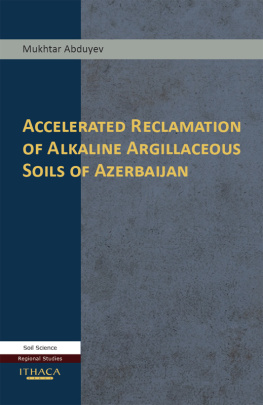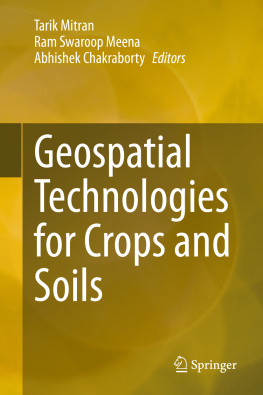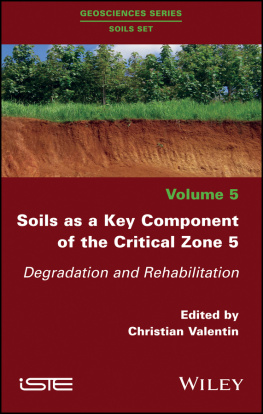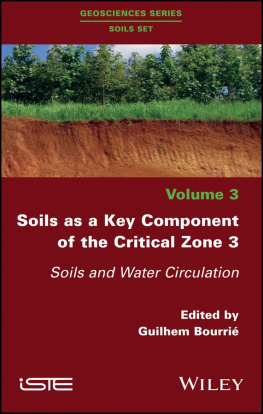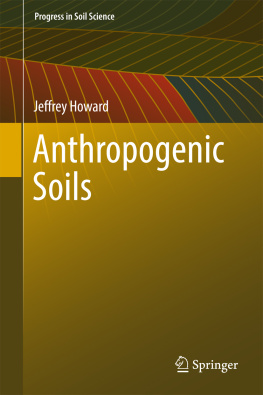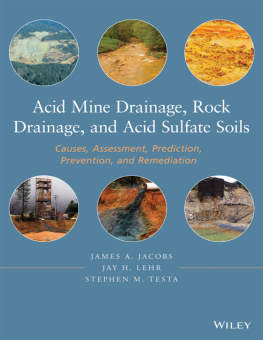Ithaca Press is an imprint of Garnet Publishing Ltd.
All rights reserved.
No part of this book may be reproduced in any form or by any electronic or mechanical means, including information storage and retrieval systems, without permission in writing from the publisher, except by a reviewer who may quote brief passages in a review.
INTRODUCTION
The lowlands of Azerbaijan occupy an important place in the economy of the republic. The main cotton growing regions of Azerbaijan are located in the lowlands. Large areas are also devoted to cereals and viticulture. In addition, these regions are interesting from the standpoint of nature and also reclamation.
As is known, reclamation of saline soils is one of the major factors in agriculture intensification. Salinization in the soil and the ground waters of the Azerbaijan lowlands greatly impedes the development of irrigation, and the development and reclamation of the land there.
Calculations indicate that soils in need of radical reclamation in Azerbaijan amount to more than 60% of the lowlands of the republic. About 2.5 million hectares of these lands is deemed difficult to reclaim, due to a hard mechanical composition of the soil, high alkalinity, and low water permeability of the soil. To improve such lands, specialists usually apply high leaching rates of water, frequently exceeding 70,000-100,000 m3 per hectare of soil, and frequently also with a deep (more than 3 m) drainage network with interdrainage distances of 100 m or less. Leaching and desalinization of saline lands are sometimes prolonged for 8-10 years. These factors greatly raise the cost of reclamation operations (more than 5-6 times) and delay the development of saline lands under agricultural crops for several years.
Saline soils with analogous reclamation properties are widely distributed in the Siyazan-Sumgayit massifs, the Karabakh, Shirvan and Salyan steppes, South Mughan, and other massifs of Azerbaijan.
The high need in agriculture for expanding sown areas and achieving a sharp rise in yields of agricultural crops demands study of the main rules involved in the overall system, the mechanism of salt migration, and the physicochemical and water-physical properties of difficultly reclaimable salinized soils, and demands the development of scientific principles of radical reclamation directed toward sharp acceleration of leaching and development of these lands.
In this connection, we decided to study and develop methods of accelerated improving of difficultly reclaimable saline soils in Azerbaijan on the basis of production-scale experiments.
With a view toward a more well-founded solution to the problem, we have carried out complex research work on difficultly reclaimable saline clay soils of the Karabakh steppe, including research into salt removal, differentiation and conjugacy of salt masses, changes in physicochemical and water-physical properties of soils, and productivity of soils leached by various means, through growing of agricultural crops in vegetation and field conditions. The crops involved were cotton, barley, and rice, as agricultural crops, and fodder pea, as forage.
The field investigations were carried out under the leadership and direct participation of the author. Also participating in the field work were graduate students V.A. Ahmedov, N.K. Mikhailov, and partly T.G. Nazarov and A.M. Guliev. Soil analyses were performed by junior research workers Sh.I. Javadzade, N.D. Ismailova and R.G. Aslanova. Calculations were performed by engineer S.G. Isgenderova. The author expresses his grateful acknowledgement to the abovementioned researchers.
CHAPTER 1
NATURAL AND SOIL RECLAMATION FEATURES OF PLAIN TERRITORIES
The lowland areas of Azerbaijan may geomorphologically be regarded as former vast shallow-water bay regions of the Caspian Sea, which existed in prehistoric times. Today this part of the republic is characterized as a plain formed by alluvial-proluvial cones deposited in diluvial-proluvial terraces. Between the cones there are more or less waterlogged contact depressions, whilst the periphery of the cones undergoes a transition to a general strip plain. The central part of the Mughan lowland is an alluvial plain formed by cumulative activity of the Kur and Araz rivers. Closed depressions, or so-called chalas and ridges, are the basic forms of mesorelief of the alluvial plain.
The lowland areas of the republic are characterized by a dry sub-tropical climate, where evaporation (1000-1100 mm) significantly exceeds annual total atmospheric precipitation (200-300 mm). Climatic conditions have contributed to the development of a semidesert ecology as relates to the zonal type of vegetation there. Russian thistle, thistle-sagebrush, and ephemeral groupings of vegetation, notable for deep root development, small leaf surface, high osmotic pressure, and strong mineralization of the cell sap, are widely spread. Some species are able to excrete salt through their leaves.
The ground water table, which generally follows the terrain, rises from the foothills to the central part of the lowland. Thus, whereas the ground waters are deficient or occur at great depths (deeper than 10-20 m) in the zone of foothills of diluvial plains, so that no evaporation of them takes place, in connection with which they do not appear as regularly acting factors in the soil formation process and do not impact the water-salt regime of the soils, it is true that the role of evaporation gradually increases and becomes a prevailing factor in the soil formation process as one progresses toward the central part of the lowland.
Thus, the abovementioned conditions and the complex history of landscape formation of the lowlands of Azerbaijan became the reason for the formation of a great variety of soils. The analysis of literature data and the results of our investigations showed that chestnut, gray-brown, gray, meadow, and marshy soils and their primitive varieties, frequently takir and takirized soils, are characteristic for the lowlands of Azerbaijan. Soils with high salinity and alkalinity are widespread among them.
The processes of salt accumulation in soils and ground waters of Azerbaijan lowlands have been considered by many researchers, but there are different concepts of these processes, under which the source of entry of salt masses into the lowlands of Azerbaijan was (respectively) the ground waters of the foothills, bringing with themselves the products of bedrock weathering in dissolved form (Savarensky, 1929), river waters and their filtration flows (Savarensky, 1929; Zakharov, 1935; Priklonskiy, 1946), sea waters (Volobuyev, 1945; Abduyev, 1966), existing centuries-long geochemical flows of salt solutions from mountains to the lowland (Kovda, 1954), intensive evaporation (Egorov, 1959), and surface diluvial-proluvial waters (Abduyev, 1965, 1968).

